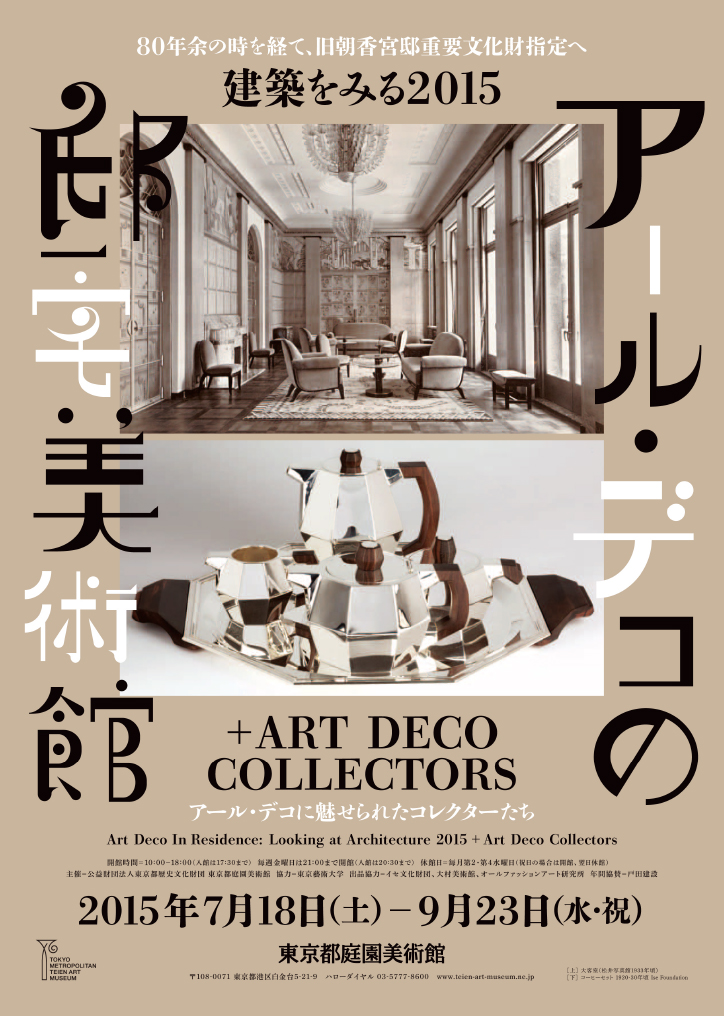The Tokyo Metropolitan Teien Museum of Art presents the ‘Art Deco In Residence’ Exhibition as part of its seasonal public programme.
The exhibition is comprised of two sub-exhibitions: ‘Looking at Architecture 2015’ where the audience is invited to take a closer look at the museum building itself, and ‘Art Deco Collectors’, which showcases a variety of reputed Art Deco works accumulated by art collectors.
The ‘Looking at Architecture 2015’ Exhibition explores the former Prince Asaka residence itself, delving into its considerable charm as a cultural heritage site. Using the original furniture and fixtures designed especially to coordinate with the interior décor, we recreate the atmosphere of the building at the time of its completion. The exhibition also looks back at the various attempts to preserve and restore the building that have taken place to date. In this way, we delve into the building’s historical significance, which has led to its designation as an Important Cultural Property, and consider the question of passing on this legacy to successive generations.
The ‘Art Deco Collectors’ Exhibition held simultaneously introduces individual collectors with a particular interest in Art Deco. Through looking at precious items in their collections not usually exposed to the public eye, and hearing these experts’ personal impressions about the work, visitors are given the chance to discover a new side to Art Deco which remains as captivating today as ever.
Concerning the Former Residence of Prince Asaka’s Designation as an Important Cultural Property
As declared in the report from the Friday 15 May 2015 Meeting of the Cultural Property Division of the Council for Cultural Affairs, the Former Residence of Prince Asaka has been officially designated as an Important Cultural Property (in the “Building” category). The building was completed in 1933 as the main residence of Prince Asaka. Following the Second World War, it was used as a public residence for foreign ambassadors and for receiving visitors, and from 1983 on, has been put to use as an art museum. The building itself has remained mostly unchanged in the 80 years since its completion, and, thus preserved in close to its original state, is highly esteemed as one of the most formidable examples of residential architectural design from the Takumiryo (Bureau of Skilled Artisans) of the Kunaisho (Imperial Household Ministry).
〇 Sections of the building designated as Important Cultural Property
The Former Residence of Prince Asaka:
Four-wing building with a single foundation.
Main Building; Tearoom; Warehouse; Garage; Entrance Gate; Site.



